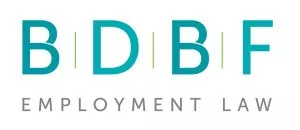In the recent case of Alcedo Orange Limited v Ferridge-Gunn the Employment Appeal Tribunal underlined the importance of scrutinising dismissal decisions in discrimination claims.
What happened in this case?
In this case, an employee was dismissed within her probationary period days after announcing her pregnancy. The chain of events unfolded as follows:
- On 27 January 2019, the claimant started working for the respondent employer and was subject to a three-month probationary period. On 14 February, the claimant met with Mr Boardman, the managing director of the respondent, and Ms Caunt, her manager. Mr Boardman and Ms Caunt raised some concerns about her performance.
- On 19 February the claimant announced that she was pregnant. On 21 February a second meeting was held to discuss the claimant's performance and it was accepted that there had been a degree of improvement.
- On 24 and 25 February the claimant was absent on sick leave as a result of morning sickness. When the claimant notified Ms Caunt, she asked whether it was contagious, how much time off she would need and that she was sorry to be unsympathetic, but she has never been pregnant before.
- During the claimant's absence on sick leave, Ms Caunt discovered that certain documents (such as references, DBS checks and training certificates) had not been uploaded to the respondent's IT systems. She told Mr Boardman that the claimant had misled them by saying that she had made progress in her performance targets.
- On 27 February – a mere eight days after announcing her pregnancy – the claimant was called to a meeting and dismissed. She was told that her performance was "below par" and things were "not working out".
The claimant brought claims in the Employment Tribunal alleging that her dismissal amounted to pregnancy discrimination and that it was also an automatically unfair dismissal. The Tribunal found that the accusation that the claimant had deliberately misled Ms Caunt in the second performance meeting was unfair and that the claimant would have completed the outstanding tasks had she not been absent with morning sickness (and they were, in fact, completed shortly after she returned to work).
The Tribunal dismissed the automatic unfair dismissal claim, holding that the claimant was dismissed for performance reasons and her pregnancy was not the sole or principal reason for the dismissal. However, it upheld her pregnancy discrimination claim. In deciding to dismiss, Mr Boardman had relied upon Ms Caunt's views about having been misled by the claimant at the second performance meeting. However, Ms Caunt's views had been influenced by the claimant's pregnancy and sickness absence.
The respondent appealed to the Employment Appeal Tribunal.
What was decided?
The respondent argued that Mr Boardman was the dismissal decision-maker and had dismissed on performance grounds. Although Ms Caunt had supplied information to Mr Boardman, she was not a decision-maker and, as such, her motivations were not relevant to the dismissal decision.
The EAT acknowledged that the Tribunal had not been referred to the leading authority on this point, namely, the Court of Appeal's decision in CLFIS (UK) Ltd v Reynolds (Reynolds). The Court of Appeal in Reynolds held that the correct approach is to consider different acts separately. The Court said: "supplying information or opinions which are used for the purpose of a decision by someone else does not constitute participation in that decision".
If a person supplying information or opinions has discriminatory motives, but the dismissal decision-maker does not, then the discriminatory act would be the supplying of the tainted information, not the dismissal.
In contrast, where it can be said that a decision has been made jointly, then a Tribunal should assess the motives of all the parties involved in that decision. A decision may be regarded as a joint decision where the appointed decision-maker has been heavily influenced by someone else, even if they have not been formally appointed as a decision-maker. A discriminatory motive held by one co-decision maker would be enough to taint the overall decision
The EAT said this case cried out for an analysis of whether Mr Boardman was a sole decision maker, a sole decision-maker whose decision had been influenced by Ms Caunt or whether he and Ms Caunt were joint decision-makers. The case was remitted to the Employment Tribunal.
What are the learning points for employers?
Previous cases have acknowledged that the "separate acts" approach endorsed in Reynolds presents a danger that unscrupulous employers could use unclear decision-making processes as a means of hiding discrimination. To counter this risk, Tribunals are prepared to scrutinise decision-making processes to identify anyone who has heavily influenced the "official" decision-maker and assess whether they should, in fact, be treated as a joint decision-maker and what their motivations were.
The practical takeaway for employers is to train decision-makers on equality law and the scope of their role. In particular, the need for them to make their decisions alone – or only in conjunction with any "official" co-decision-makers. Further, anyone supplying information or evidence to the official decision-maker/s should be asked to do just that and avoid pushing for a preferred outcome. Together, these steps should ensure that only the motivations of the official decision-maker/s are taken into account when assessing whether the dismissal was discriminatory. Although this does not avoid the risk of a discrimination claim altogether, it should help to ensure the dismissal decision is unimpeachable.
It is worth noting that the position for discrimination claims is different to whistleblowing dismissal claims where, if a sole decision-maker is misled by someone acting from improper motives, the dismissal decision itself may be considered unfair (rather than the acts being treated as separate). You can read more about the position for whistleblowing claims here.
Alcedo Orange Limited v Ferridge-Gunn
The content of this article is intended to provide a general guide to the subject matter. Specialist advice should be sought about your specific circumstances.


